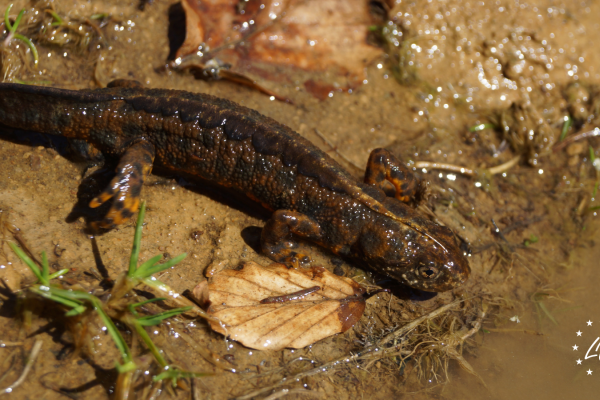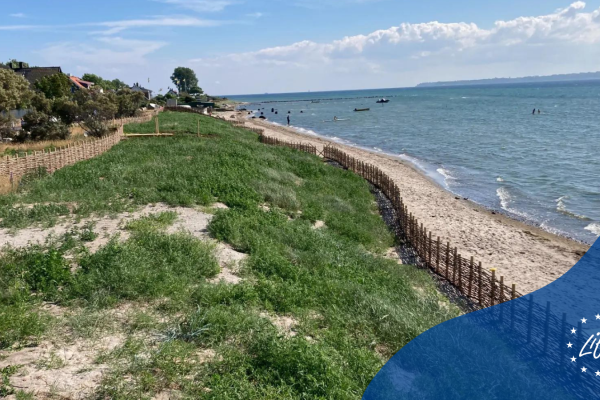Overview

Our seas provide us with endless natural resources, support wildlife, keep our climate stable and create employment opportunities. Coastal habitats protect us from extreme weather phenomena, and various coastal activities provide a livelihood to many Europeans.
However, unsustainable practices and multiple pressures from human activities threaten the fragile balance of marine ecosystems. Our increased demands on the sea for food, shipping as well for offshore renewable energy production, just to name a few, increase the pressure on the marine environment. This leads to pollution, biodiversity loss, seabed damage, overexploitation, spread of non-indigenous species, marine litter, underwater noise, and ocean warming and acidification.
The EU has a holistic framework to protect and conserve its coasts, seas, and the ocean, and ensure their sustainable use.
Objectives
The EU’s main tool to protect and conserve the health of our coasts, seas and ocean is the Marine Strategy Framework Directive (MSFD). Its aim is to achieve a good environmental status of the EU's marine waters and sustainably protect the resource base upon which marine-related economic and social activities depend. Through the MSFD, the ecosystem-based approach became a legally-binding and operational principle for managing the EU’s entire marine environment.
In the EU



Discover a more complete picture of the state of Europe’s seas.
Policy
In 2008, the EU adopted the Marine Strategy Framework Directive (MSFD) to maintain clean, healthy, productive and resilient marine ecosystems while securing a more sustainable use of marine resources. This Directive directly contributes to the ambition of the European Green Deal, namely the EU’s Biodiversity Strategy for 2030 and the Zero Pollution action plan.
The Directive requires Member States to develop national marine strategies in order to achieve, or maintain where it exists, 'good environmental status'. Such status should have been achieved by 2020. The marine strategies comprise regular assessments of the marine environment, setting objectives and targets, establishing monitoring programmes and putting in place measures to improve the state of marine waters.
The measures should also include spatial protection measures, such as a coherent and representative network of marine protected areas. All these actions must be done in close coordination with neighbouring countries at regional sea level. Annex III of the Directive, detailing lists of characteristics, pressures and impacts that Member States need to consider in their marine strategies, was revised in 2017.
Good environmental status
The main goal of the Marine Directive is to achieve Good Environmental Status of EU marine waters by 2020. The Directive defines Good Environmental Status (GES) as “The environmental status of marine waters where these provide ecologically diverse and dynamic oceans and seas which are clean, healthy and productive”.
It means that the different uses made of the marine resources are conducted at a sustainable level, ensuring their continuity for future generations.
To help Member States interpret what this means in practice, in Annex I the Directive sets out eleven qualitative descriptors which describe what the environment will look like when GES has been achieved.
- Descriptor 1: Biodiversity is maintained
- Descriptor 2: Non-indigenous species do not adversely alter ecosystems
- Descriptor 3: Populations of commercial fish and shellfish species are healthy
- Descriptor 4: Food webs ensure long-term abundance and reproduction of species
- Descriptor 5: Eutrophication is reduced
- Descriptor 6: Sea floor integrity ensures the proper functioning of ecosystems
- Descriptor 7: Permanent alteration of hydrographical conditions does not adversely affect ecosystems
- Descriptor 8: Concentrations of contaminants give no pollution effects
- Descriptor 9: Contaminants in seafood are at safe levels
- Descriptor 10: Marine litter does not cause harm
- Descriptor 11: Introduction of energy (including underwater noise) does not adversely affect the ecosystem
In 2017 a Commission decision further detailed the criteria and methodological standards that Member States need to use when determining good environmental status for each of these descriptors. It also prescribes specifications and methods for monitoring and assessing the state of the marine environment. It requires that Member States quantify limits, or threshold values, set to the levels of the pressures or impacts a sea can withstand without significant or irreversible damage to the marine life and its habitats. The use of these threshold values in the marine strategies was clarified in a Commission notice.
Find out more about the descriptors.
Review of the Marine Strategy Framework Directive
The Commission is reviewing the Directive and will propose amendments if necessary. The review will build on the report adopted in June 2020 that assessed the first implementation cycle of the MSFD and highlighted a number of elements that need to be addressed.
The 2020 implementation report was accompanied by three other documents covering the state of the marine environment, MSFD implementation in detail, and an in-depth look on the various elements of the marine strategies.
See the public consultation and provisional timeline for the review. A stakeholder conference the Future of our Seas was held in 2021.
A holistic framework
The Marine Strategy Framework Directive builds on existing EU legislation and covers specific elements of the marine environment not addressed in other policies. Some of the key legislation and policies directly relevant to the Directive are
- The Water Framework Directive - sets the goal of achieving Good Status for all EU surface and groundwaters by 2015, tying in with the goal of Good Environmental Status under the Marine Directive.
- The Birds and Habitats Directives - Europe’s central laws on nature conservation, providing special protection for key sites including marine.
- The Common Fisheries Policy sets out a collaborative approach to managing the EU’s shared seas and fisheries. It lays down rules to ensure Europe’s fisheries are sustainable and do not damage the marine environment, thereby contributing to achieving good environmental status.
- The Blue economy and maritime spatial planning - setting out the policy framework for use of maritime space and resources
- REACH Regulation - aims to improve the protection of human health and the environment through the better and earlier identification of the environmental risk chemicals pose.
- Action plan: Protecting and restoring marine ecosystems for sustainable and resilient fisheries, bridging the fisheries and environment worlds for a transition to sustainable ways of fishing.
- The Urban Waste Water Treatment Directive – regulates one of the main sources of water pollution that can find its way to coastal waters if left uncollected and untreated.
- The Waste Framework Directive provides important mechanisms for the removal of litter and the improvement of water quality in line with the requirements of the MSFD.
Others include the Single-Use plastics Directive, the EU Plastics Strategy, the Circular Economy Action Plan, Strategic Environmental Assessment and Environmental Impact Assessment Directives, the Port Reception Facilities Directive, the Ship-source pollution Directive and many others.
Implementation
The Marine Strategy Framework Directive is implemented over six-year cycles. EU Member States report at each step of the cycle and the Commission provides its assessments and recommendations.
The implementation of the Directive is therefore an ongoing process. It requires an unprecedented and coordinated input from Member States. To facilitate this work, Member States and the Commission (together with regional sea conventions and other stakeholders) have set up an informal programme of coordination, the common implementation strategy. The Directive also requires the Member States provide access to environmental information and public participation in environmental decision-making.
Regional and international cooperation
Regional cooperation
When developing their marine strategies, Member States are required to coordinate with each other and third countries though existing regional cooperation structures. In Europe, there are four Regional Sea Conventions which aim to protect the marine environment and bring together Member States and neighbouring countries that share marine waters.
Mediterranean Sea
The Barcelona Convention for the Protection of the Marine Environment and the Coastal Region of the Mediterranean was adopted in 1995 and builds on UNEP’s Mediterranean Action plan established in 1975. The aim is to protect the Mediterranean marine and coastal environment while boosting regional and national plans to achieve sustainable development. The latest Conference of the Parties was held in December 2023 (COP23).
Black Sea
The Bucharest Convention on the Protection of the Black Sea Against Pollution was adopted in 1992. It provides a legal framework for regional cooperation to protect the coastal and marine environment.
Baltic Sea
The Helsinki Convention on the Protection of the Marine Environment of the Baltic Sea Area (HELCOM) was adopted in 1992. It covers the whole of the Baltic Sea area, including inland waters, sea waters and seabed. Measures are also taken in the whole catchment area of the Baltic Sea to reduce land-based pollution.
In 2020, the Our Baltic conference organised by the Commission led to the signing of the Our Baltic Declaration by the Ministers for Environment, Agriculture and Fisheries from eight EU Member States in the region. A second edition of the conference is being held in September 2023 to take stock of the progress so far in implementing the actions of the declaration.
HELCOM published its latest quality status report, HOLAS III, in October 2023.
In April 2024, a ministerial meeting commemorated the 50th anniversary of the Helsinki Convention and HELCOM. The EU joined this commemoration, where ministers debated the current state of the Baltic Sea, among other things.
North-East Atlantic
The OSPAR Convention for the Protection of the Marine Environment of the North-East Atlantic was adopted in 1992. It guides international cooperation for the protection of the marine environment of the North-East Atlantic.
In June 2023 and with the support of the EU, OSPAR strengthened the conservation objectives of largest marine protected area in the North-East Atlantic, supported from the EU.
OSPAR published its latest quality status report in September 2023.
The EU is a contracting party to the Barcelona Convention, HELCOM and OSPAR.
International cooperation
The MSFD is a key pillar for the EU to deliver on its global commitments to protect the marine environment and develop a sustainable approach to ocean management. This is recognised in the EU’s International ocean governance initiative. Achieving the objectives of the Directive contributes to the following instruments:
- The United Nations Convention on the Law of the Sea (UNCLOS) - UNCLOS provides the legal framework for contemporary principles of protection of the marine environment, including the ecosystem-based approach, the precautionary approach and sustainable development.
- The Convention on Biological Diversity (CBD) - The CBD aims to halt biodiversity loss, ensuring the conservation and sustainable use of marine biodiversity, and to create a global network of marine protected areas (MPAs).
- Sustainable Development Goal 14 - Conserve and sustainably use the oceans, seas and marine resources for sustainable development
Data, research and funding
The MSFD triggered research initiatives that informed experts, managers and policy makers. Its monitoring programmes have collected data and increased our knowledge of the seas.
Access to information and data on the state of Europe’s seas, on the pressures affecting them, and on the actions being taken to protect and conserve the marine environment.
Research and innovation on oceans can be developed through the EU Mission Restore our Oceans and Waters.
Several funds can be accessed for the purpose of protecting the marine environment including the
- European Maritime, Fisheries and Aquaculture Fund (EMFAF)
- LIFE programme
- Horizon Europe
- European Regional Development Fund (ERDF) (including Interreg programmes)
- European Social Fund+ (ESF+)
- European Agricultural Fund for Rural Development (EAFRD)
- Connecting Europe Facility
- Recovery and Resilience Facility
Specific projects were also previously funded under the European Maritime, Fisheries Fund (EMFF).






